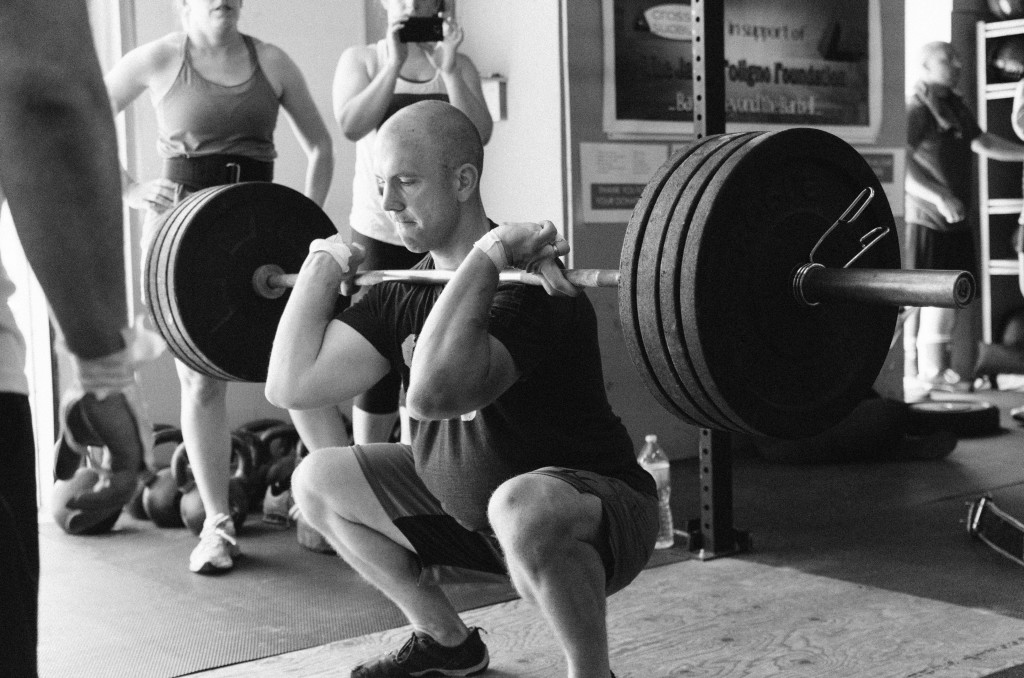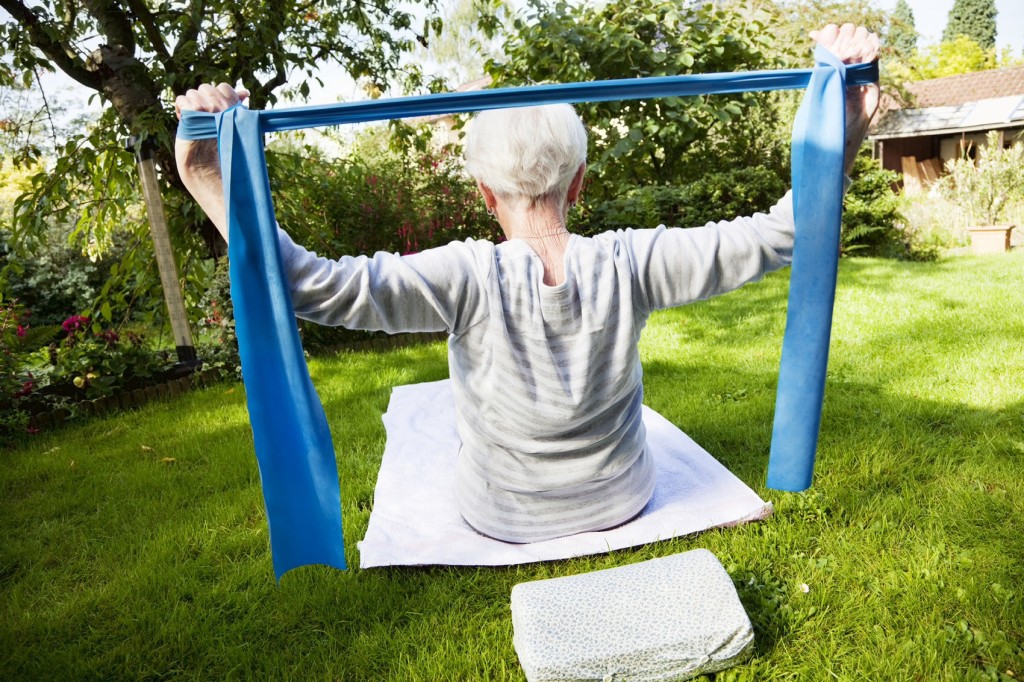On a global scale, the number of people over 60 yr is expected to more than double from 841 million in 2012 to more than 2 billion by 2050. This change in demographics will have profound implications for many aspects of life (Thomson et al. 2016). Furthermore, Government bodies worldwide will be faced with considerable challenges related to ageing policy and how best to deal with this new reality.

Of the many things that occur during the ageing process one of the most obvious signs is the loss of skeletal muscle mass and strength, with decrements in physical function and potential predisposition to disability. In academic speak, this is known as sarcopenia. The research and interest in this area has been gradually increasing as evidenced by the below graph that shows – since the term sacropenia was first coined in 1989 – a massive increase has occurred. To enhance functional physical capacity and reduce disability into older age, it is therefore critical to develop strategies that facilitate the attenuation of skeletal muscle mass and strength. With more than 30 years of scientific evidence to show that exercise – and, more specifically, resistance training – as both very effective and safe methods to maintain skeletal lean muscle tissue mass and strength (see here and here), current recommendations strongly advocate this form of exercise for older adults.
Interestingly, gains in skeletal lean muscle tissue and muscular strength may be potentiated through the application of appropriate nutritional strategies and in particular increased protein intake. A recent meta-analysis by Cermak and colleagues (2012) reported ~35% greater enhancement in muscle mass and strength can be achieved in older adults undertaking resistance training who consumed at least 1.2 g/kg of body weight/d of protein through supplementation or diet compared with other control groups that were either non-protein, lower protein diet or exercise training with no nutrition co-intervention. Thus, protein quality or source may further augment the effect of the resistance training stimulus by eliciting a greater stimulatory effect on muscle protein synthesis. Dairy protein compared to soy protein has been shown to be more effacacious post-exercise in stimulating increases in lean mass in young healthy males. In older adults though this response to resistance training and increased protein intake may be blunted which necessitates that higher doses of protein are required to bring about an increase.
The aim of the study under review for this article was to determine whether increased dairy or soy protein intake combined with resistance training improved strength gains in older adults.

Researchers recruited one hundred and ninety two older adults (age, 50-79 yr; BMI, 20-35 kg/m²) by public advertisement. Participation was allowed if they were physically active but not engaged in formal exercise. Those that meet the inclusion criteria undertook a resistance training program for 12 weeks. Randomisation to one of three experimental diets was performed:
- High dairy protein diet (HP-D)
- High non-dairy (soy) protein diet (HPeS)
- Usual protein diet (UP).
DIET: Each diet was isocaloric and low-fat (30% fat, <8% saturated fat) and aimed to maintain energy balance. The diets provided ~1 g/kg of body weight/d of dietary protein, mainly from lean meat sources. HP-D including additional dairy protein of ~27 g per day in the form of a shake (475 g Devondale Smart reduced fat milk, 200 g Nestle Soleil diet no fat yoghurt & 20 ml Bickfords vanilla milk mix syrup). The HP-S providing in the form of a shake – 300 g So Good reduced fat soy milk, 100 g Kingland soy yoghurt, 20 g Nature’s Way instant natural protein powder & 15 g poly-joule – which added an extra ~27 g of soy protein. Protein intake was distribtuted evenly across the day with the three main meals providing >20 g per feed; this is consistent with best practice for optimising muscle protein synthesis in older adults. Following resistance training sessions participants consumed the appropriate additional foods immediately after training and that represented the main meal of that day. Participants were supplied with key foods specific to their allocated diet for the duration of the study to facilitate adherence. Energy and macronutrient intakes from daily food checklists were analysed to monitor food intake and dietary compliance.

RESISTANCE TRAINING: All subjects participated in a whole body resistance training program three days per week on non-consecutive days for 12 weeks and the principles of progressive overload were applied. Five exercises on weight stack pin loaded machines were performed: leg press, chest press, knee extension, lat pull down and leg curl, and seated bent knee hip flexions. Trainees started with one set x 8 repetition maximum (RM; maximum weight lifted for eight repetitions), this was maintained until individuals could perform three sets of 12 repetitions and then the load was increased. This cycle was repeated again for the duration of the trial. Assessment of muscle strength, body composition, physical function and quality of life was conducted at baseline and 12 weeks. All exercise training was completed in the research gymnasium at the University of South Australia under the supervision of gymnasium staff.
Assessment of muscle strength using handgrip, isokinetic dynamometry and 8RM was completed. The leg press, chest press, knee extension, lat pull down and leg curl were tested with 8RM and a summed total 8RM for all exercises was recorded Dominant handgrip strength was measured using hydraulic handgrip dynamometer and isometric strength of the knee extensor muscles of the right leg was assessed using an isokinetic dynamometer.

RESULTS: 83 participants completed the intervention being adherent to both diet and resistance training protocols. HP-D and HP-S had higher protein intakes compared with UP (HP-D 1.41 ± 0.14 g/kg/d, HP-S 1.42 ± 0.61 g/kg/d, UP 1.10 ± 0.10 g/kg/d; P < 0.001 treatment effect). Baseline characteristics, compliance with the intakes of the additional protein foods and adherence to the resistance training program in those that meet all relevant study protocols was not different between groups.
Increase in muscular strength as ascertained by total 8RM was significantly less in HP-S compared with HP-D and UP (HP-D 92.1 ± 40.8%, HP-S 63.0 ± 23.8%,UP 92.3 ± 35.4%; P=0.002 treatment effect). 8RM percent improvement in leg press was much greater in HP-D and UP compared with HP-S (HP-D, 136.8 ± 88.2%; HP-S, 64.8 ± 35.2%; UP, 135.0 ± 62.0%; P < 0.001). For most other exercises, 8RM was not signficantly different for each diet group. Total training volume over the 12 weeks was not different between groups.
Weight, waist circumference and total body fat decreased and lean mass and the distance covered during the 6 min walk test increased significantly increased with no difference between diets. As expected absolute protein intake (g) and relative protein intake (per kg body weight) were different with HP-D and HP-S greater than UP. Dairy protein in HP-D was significantly greater compared with both HP-S and UP with the amount of non-dairy protein in HP-S significantly greater compared with both HP-D and UP.
DISCUSSION: This study has demonstrated that 12 weeks of progressive resistance training exercise in healthy older adults did not provide any additional benefit for improvements in strength, body composition, physical function, or quality of life when additional protein from either dairy or soy is compared to usual (lower) protein intake. Perhaps of more significant interest is that results suggested that increased soy protein intake attenuated improvements in muscular strength. I am going to publish this article before it is entirely finished as I believe this is important research for those interested in this area and facilitating discussion on this topic should start now.

Over the next week or so I will be posting a part 2 in relation to this study as there is a lot more to explore. For example, why did the authors fail to acknowledge or discuss the fact that the attentuated strength improvement in the HP-S was confined exclusively to the leg press exercise? For all other exercises, no difference for dietary influence on strength improvement was found. Whilst not a criticism, it seems rather odd that whey protein was not included as one of the intervention dietary arms of the study. The evidence for whey protein augmenting the development of strength and facilitating the accretion of lean muscle mass from resistance training is well documented. Comparing this with the other diets would have provided some interesting insights into whether there are any further benefits of whey protein to older adults. Finally, one thing that does disappoint me about many of the studies that investigate the efficacy and safety of resistance training in older adults is the reliance on exercises that are machine-based.
CONCLUSION: Increased soy protein intake attenuated gains in muscle strength during resistance training in older adults compared with increased intake of dairy protein or usual protein intake.
Look out for part 2 (see here) titled “Does Soy Protein Really Inhibit Resistance Training Induced Strength Gains In Older Adults?” where I will discuss some of the things I mentioned above in more depth and some possible mechanisms of action as to why soy protein may or may not suppress strength gains from resistance training.
Post-script: Following further analysis and publication of part 2 of this blog, I wrote a letter to the Editor of Clinical Nutrition Journal outlining some of the, what I believed, flaws regarding the interpretation of the results of this trial. Upon peer review this was accepted for publication and can be found here. If you are unable to access this correspondence and the authors reply to my letter, please contact me and I should be able to assist.
References
Cermak et al. (2012) Protein supplementaiton augments the adaptrive response of skeletal muscle to resistance-type exercise training: a meta-analysis Am J Clin Nutr 96: 1454- 64.
Thomson et al. (2016) Muscle strength gains during resistance exercise training are attenuated with soy compared with dairy or usual protein intake in older adults: A randomized controlled trial. Clinical Nutrition. 35: 27-33
Wilson, SA (2016) Comment on: Muscle strength gains during resistance exercise training are attenuated with soy compared with dairy or usual protein intake in older adults: A randomized controlled trial. Clinical Nutrition. 35(6):1575-1576
Disclaimer: All contents of the FitGreyStrong website/blog are provided for information and education purposes only. Those interested in making changes to their exercise, lifestyle, dietary, supplement or medication regimens should consult a relevantly qualified and competent health care professional. Those who decide to apply or implement any of the information, advice, and/or recommendations on this website do so knowingly and at their own risk. The owner and any contributors to this site accept no responsibility or liability whatsoever for any harm caused, real or imagined, from the use or distribution of information found at FitGreyStrong. Please leave this site immediately if you, the reader, find any of these conditions not acceptable.
© FitGreyStrong

I agree with you. Thanks for writing on such topic.
Cheers Shane